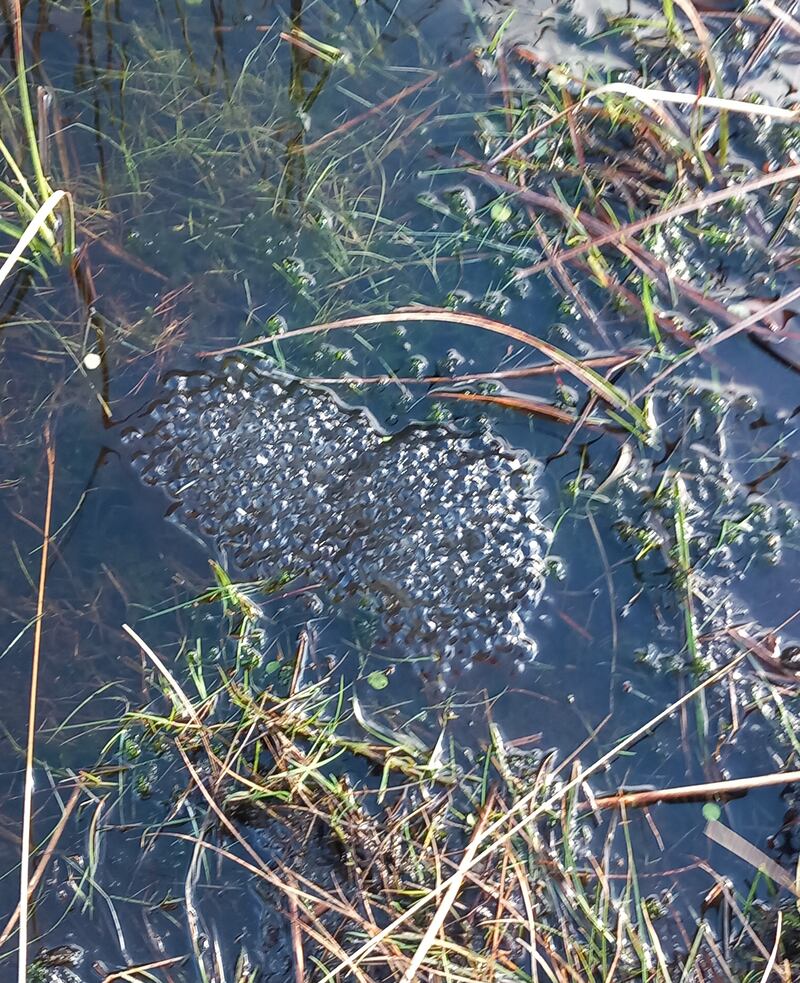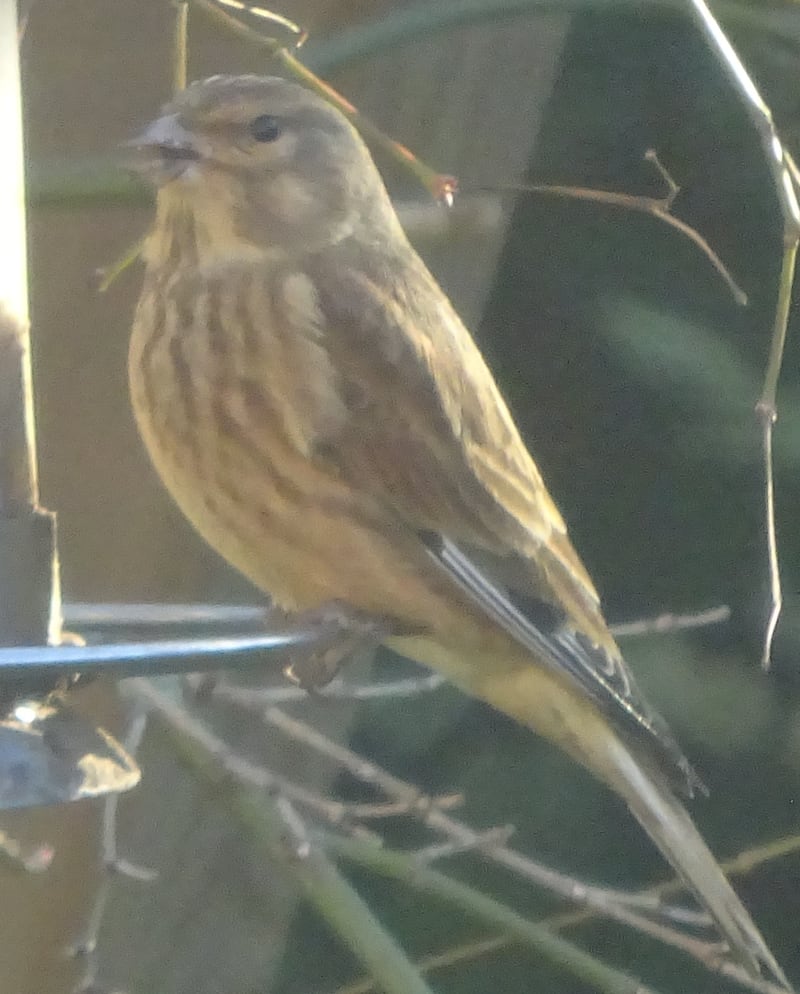I saw this frog crossing the railway line near Mossbrook level crossing outside Claremorris, Co Mayo on February 15th. Frank Golden
This female frog, heavy with eggs, is not letting the mere inconvenience of a working railway line get in her way as she hastens to the pond where she was born in order to mate. While male frogs hibernate at the bottom of ponds and take in oxygen from the water through their skins, females hibernate separately some distance away in damp ditches surrounding fields.

I saw this frogspawn in a drainage ditch on the side of Tonelagee, Co Wicklow, on February 19th. Is this not very early for frogspawn at this altitude? M Byrne, Dublin
Rising temperature wakes frogs from hibernation. They then assemble at ponds and wet places to breed before dispersing into the surrounding vegetation, leaving the developing spawn to look after itself. Temperatures have been above average this February, so it is not surprising that the frogs are already up and at it.
This sparrowhawk killed a pigeon in our garden. It plucked the breast, ate the liver, then flew away carrying it, leaving behind a huge mass of feathers. F Lee, Cabinteely, Dublin
This is a female sparrowhawk, which at 38cm is considerably bigger than the male, which only reaches 28cm. Sparrowhawks are the most common bird of prey in urban areas. It hunts by flying low and fast along one side of a hedge and then suddenly darting up and over to catch its unsuspecting victims. These are quite often small birds at a bird feeder, although the larger female is well able to nab a pigeon, as in this case. The most nutrient-rich parts, such as the liver and brains, are eaten first.

I wonder if you could confirm the ID for this bird? I was told it was a female yellowhammer, but I can’t see the relevant similarities in any of the many bird books I have. Also, I have never seen a male yellowhammer in my garden in 20 years. George Nohilly, Co Wicklow
You are right to be doubtful because the bird is not a yellowhammer but a female linnet. This, while lacking the bright show-off plumage of the male, has the characteristic white flashes on the wing. It really doesn’t resemble a female yellowhammer, which has yellow tinges on the head, throat and lower belly. Yellowhammers have declined dramatically in the past 20 years because of the switch from spring to autumn sowing of cereals, and indeed linnets have become much more scarce, too.

Are these two fungi related? Hugh Cummins, Dublin
Mycologist Hubert Fuller tells me that not only are they related but they are actually two stages of the same fungus: Pholiota squarrosa, the shaggy pholiota. This opportunistic pathogen of a wide range of deciduous trees usually forms dense clusters at the base of the trunk.

I noticed this wild primrose in my garden on February 2nd. Is it last year’s or this year’s? M Maloney, Balbriggan
A good question. The National Biodiversity Data Centre receives records of primroses in flower for every month of the year, but mainly for April. They do have records for December, so technically if this began to flower then, and your picture shows a primrose not in the first flush of youth, then it could be last year’s.
Please submit your nature query, observation, or photo with a location, via irishtimes.com/eyeonnature















